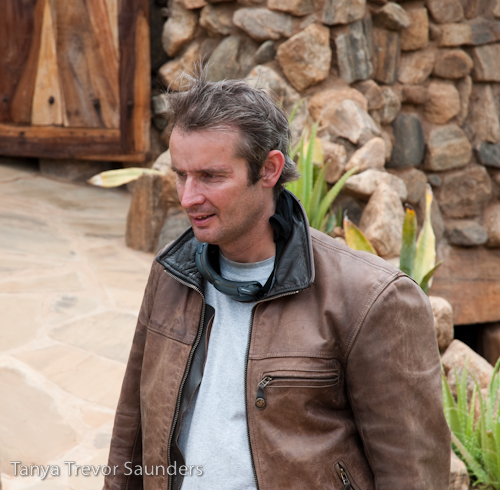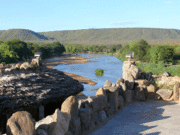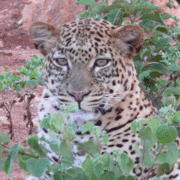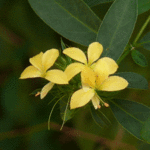Whether flowered or feathered, it's time to hawk your wares
 Monday, March 15, 2010 at 03:41PM
Monday, March 15, 2010 at 03:41PM We keep getting a little bit of drizzle here and there, and oddly fluctuating days between stifling heat and haze, cloudy cold mornings and muggy hot afternoons…a strange time indeed for the weather.
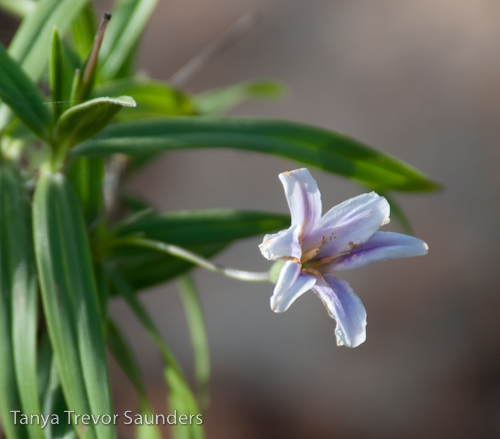
Nevertheless the flowers seem to be enjoying the conditions, and many are starting to flower, including the ‘cups and saucers’ (carphalea glaucescens) and the lovely white flower (above) that grows along the rick edge near our Crocodile Falls on the Mtito River. There are plenty of other colours too, from shocking pink to powder blue…
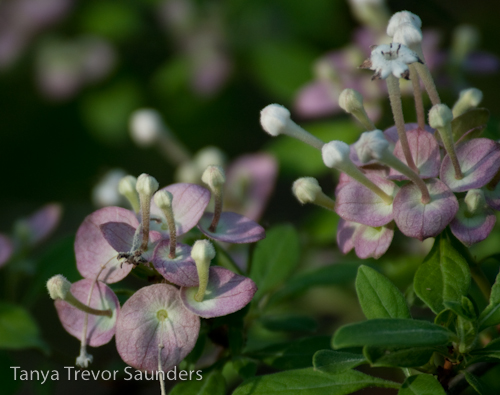 'Cups and Saucers' (carphalea glaucescens)
'Cups and Saucers' (carphalea glaucescens)
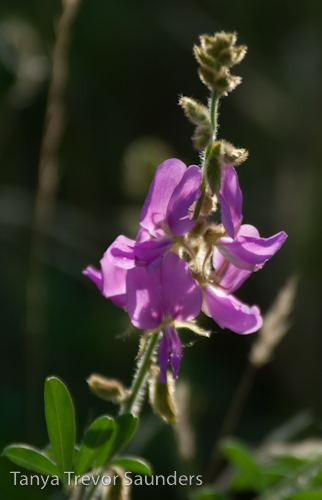
Down near our well, the undergrowth resembles tropical jungle – a far cry from a few months back:
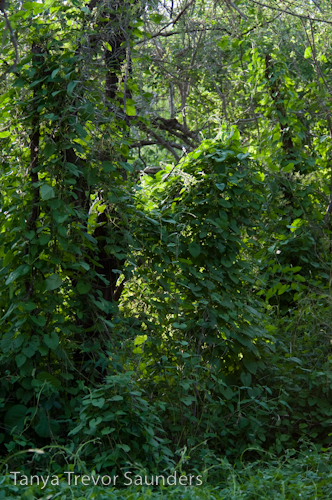
On the 12th March, I photographed the Crocodile Falls. Now that the flood has subsided, the Mtito River is flowing clear again – in marked contrast to the Athi, which is still muddy and red. You can see the difference in the water where the small river meets the large one:
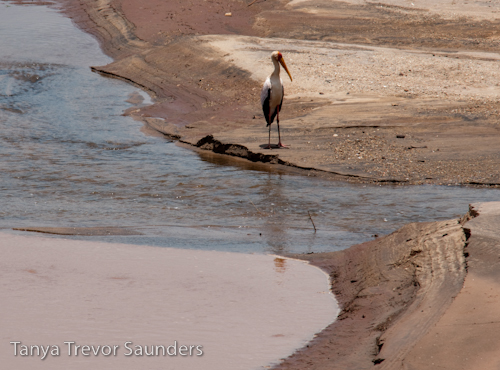 A Yellow-billed Stork stands at the confluence of the muddy Athi River and the clear Mtito River
A Yellow-billed Stork stands at the confluence of the muddy Athi River and the clear Mtito River
The Crocodile Falls were looking pretty as ever, even with the sun directly behind and not great for photographing them (morning is better). There was a large crocodile lurking beneath one of the falls, but nothing as dramatic as what I photographed back in December 2007:

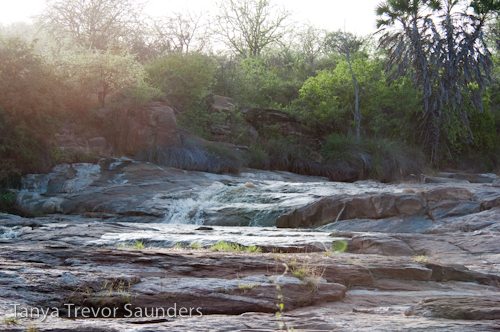
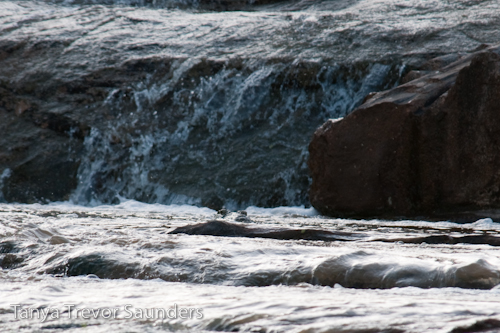 Almost impossible to spot, a crocodile lurks beneath the falls, only the top of its head showing
Almost impossible to spot, a crocodile lurks beneath the falls, only the top of its head showing

The Acacia tree which had played host to weaver bird nests and many confrontations between the Diederiks Cuckoos and the weavers has died. I don’t know whether this is because of lack of water – these days, due to excessive damming upstream combined with decreasing rainfall, the Mtito only flows a few days each year.
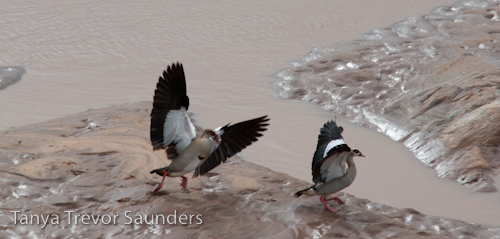
The birds are courting and displaying now. The Egyptian Geese have turned belligerent and highly territorial again (see the male attacking a trespasser, above). On 12th March our resident pair were mating so perhaps it won’t be long before we see another brood of goslings. The sunbirds, doves, kingfishers, starlings and hornbills are all hard at it too.
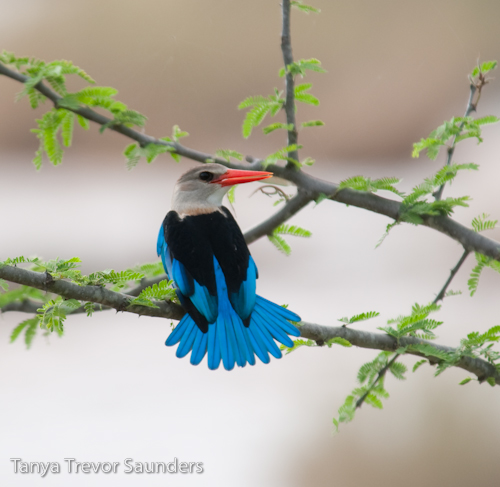 If you had all the paints in the world, it would still be difficult to create anything quite as beautiful as what Nature has already created in the Grey-headed Kingfisher, seen here displaying to its mate by splaying its tail and opening its wings.
If you had all the paints in the world, it would still be difficult to create anything quite as beautiful as what Nature has already created in the Grey-headed Kingfisher, seen here displaying to its mate by splaying its tail and opening its wings.
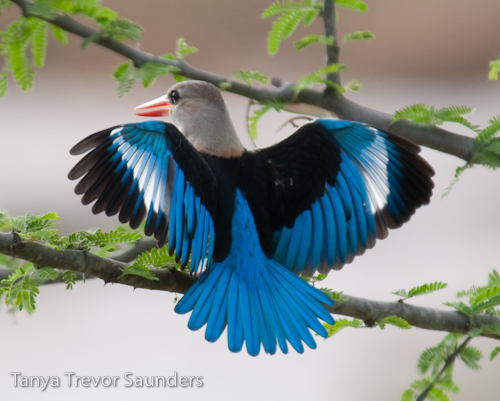
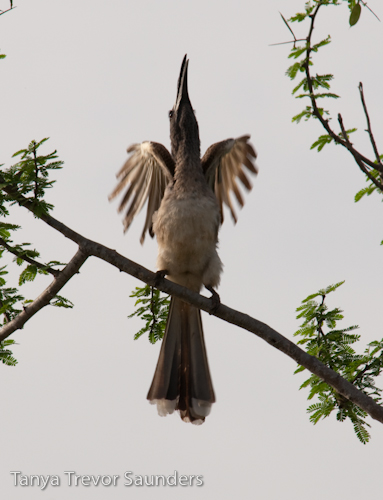
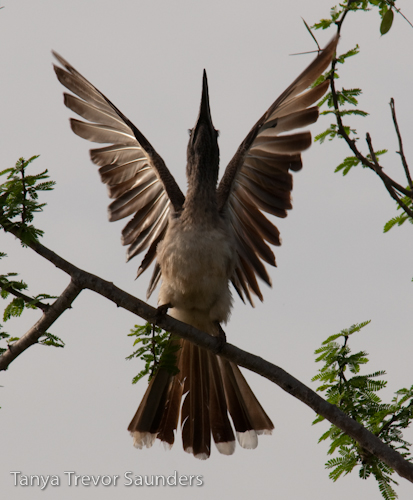 The African Grey Hornbills, with their distinctive whistling cry, display to each other by throwing their heads back, calling and flapping their wings
The African Grey Hornbills, with their distinctive whistling cry, display to each other by throwing their heads back, calling and flapping their wings
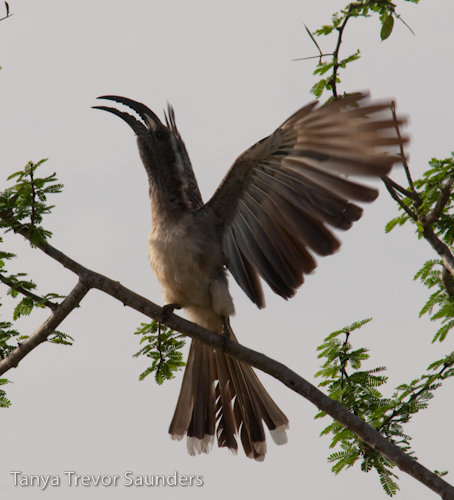
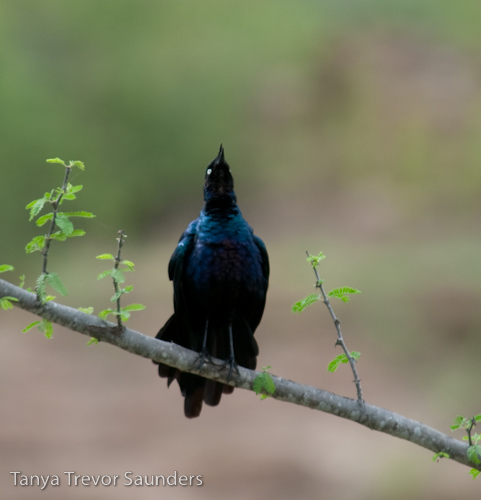 Not to be outdone, the Glossy Starlings are also chortling away and trying to get noticed
Not to be outdone, the Glossy Starlings are also chortling away and trying to get noticed
We watched this serrated hinged terrapin cross the river below the house. It reminded me of a sea turtle heading back out into the ocean as it made its way towards the deeper part of the river and disappeared:
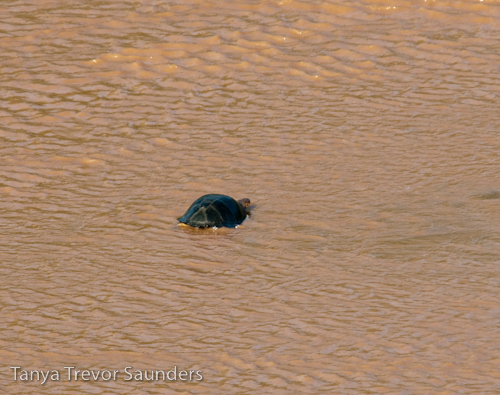

A Southern Long-tailed Lizard made a pretty picture dashing around in the dappled undergrowth, catching ants (by the look of its movements):
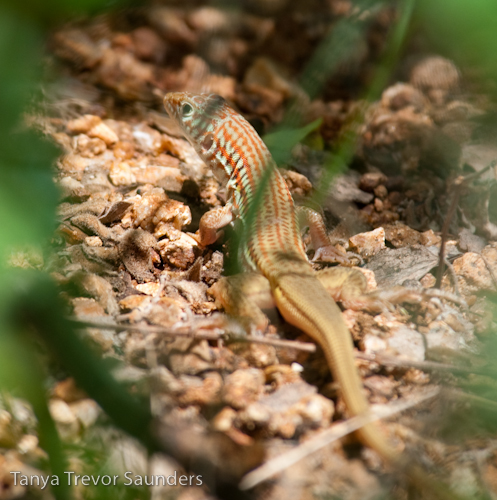
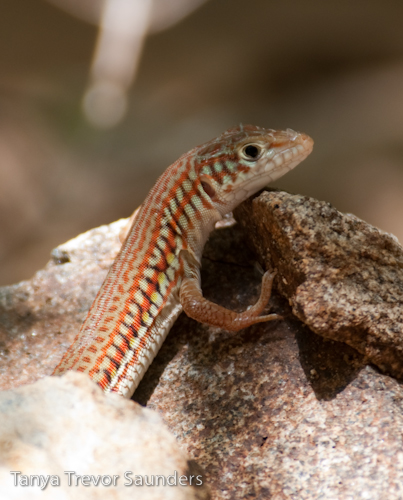
Another welcome visitor was a lovely bull elephant, who came down to the river yesterday lunchtime, and spent a long while drinking and splashing and generally cooling off in the searing heat of midday. On Saturday, we had seen a lovely herd of elephants on the other side of the Mtito River in the park. Not being very used to cars and unfortunately often being disturbed by illegal charcoal burners in this area of the park, the elephants were very nervous and one in particular was a bit “hot under the collar”.
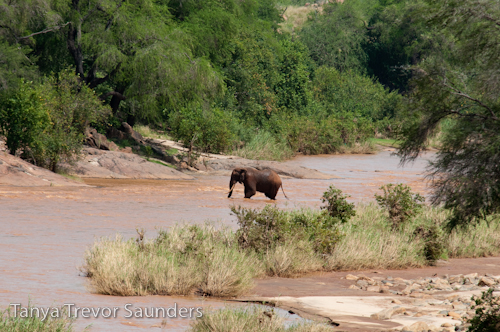
And very exciting news: last night, Ian saw a baby genet cat outside our bedroom door, catching bugs attracted by the lights. It must be the offspring of one of “our” genets who have brought it into the house. Call us soft-hearted, but we decided to leave the lights on all night, to help it out. (And yes, I am ever so slightly envious of Ian having seen the little thing, but hopefully it will keep coming, and I will get a look at it too.)
Ian returned from Nairobi with his new (actually very old) bush car – it’s his 28 year old Range Rover which he has had cut down to the bare minimum. The car will be useful for all sorts of jobs around our land here, from ferrying water pumps to taking our guys out on de-snaring operations.
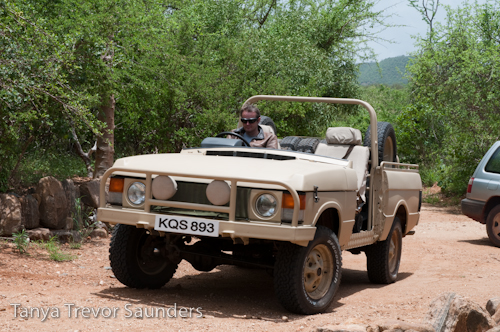
The drive down from Nairobi in this open car with no windscreen must have been breezy to say the least, and Ian arrived looking rather “windswept and interesting”!
